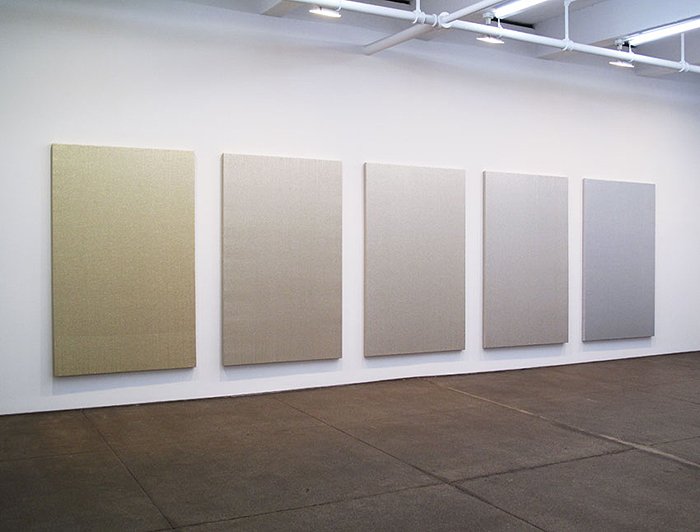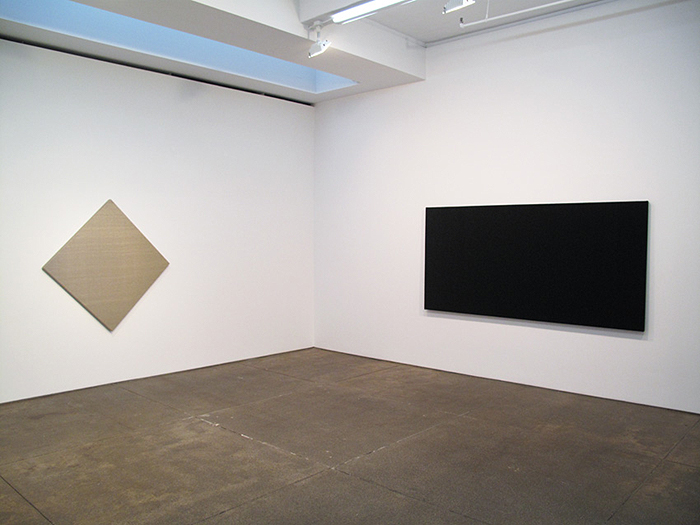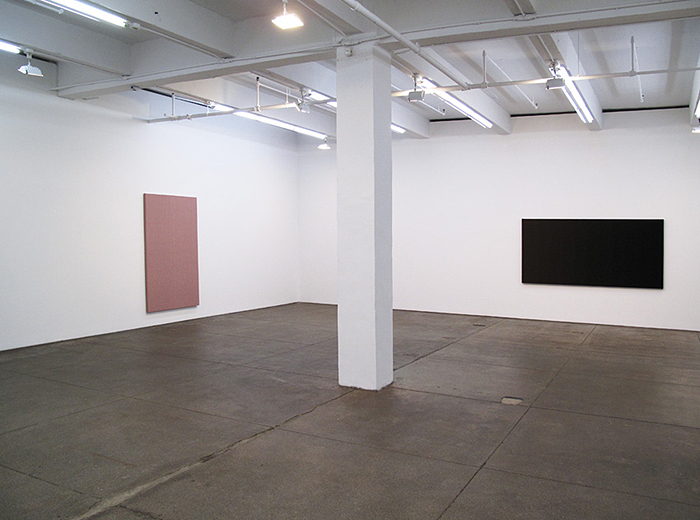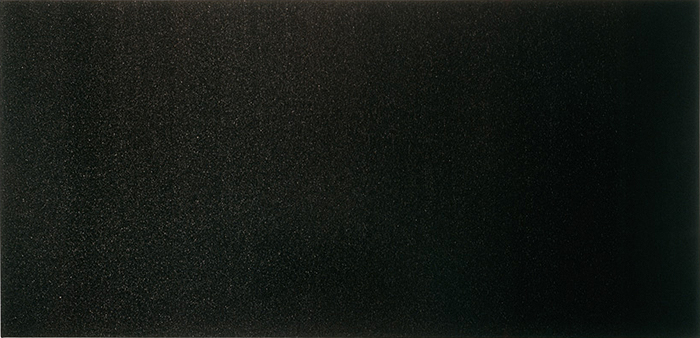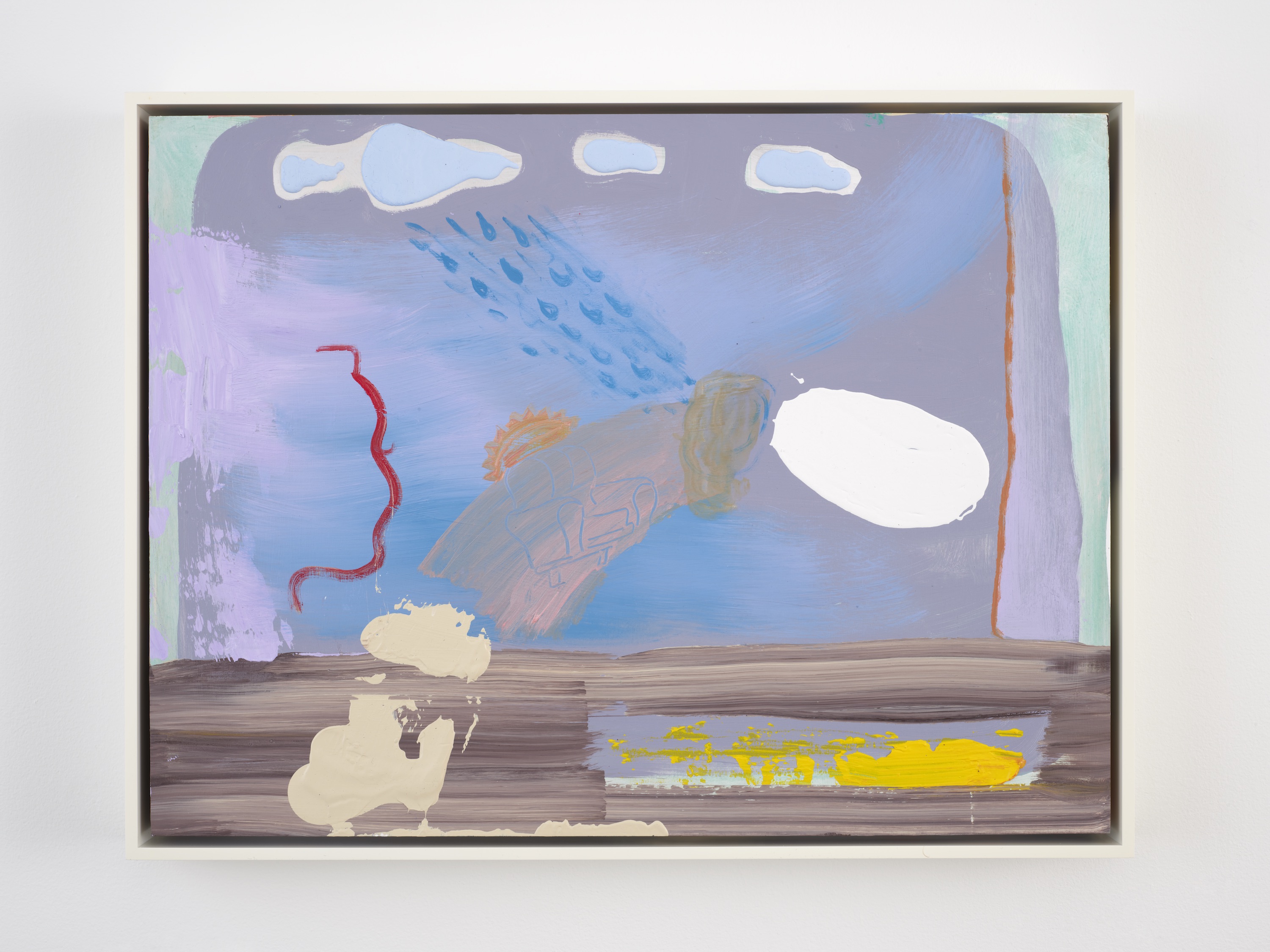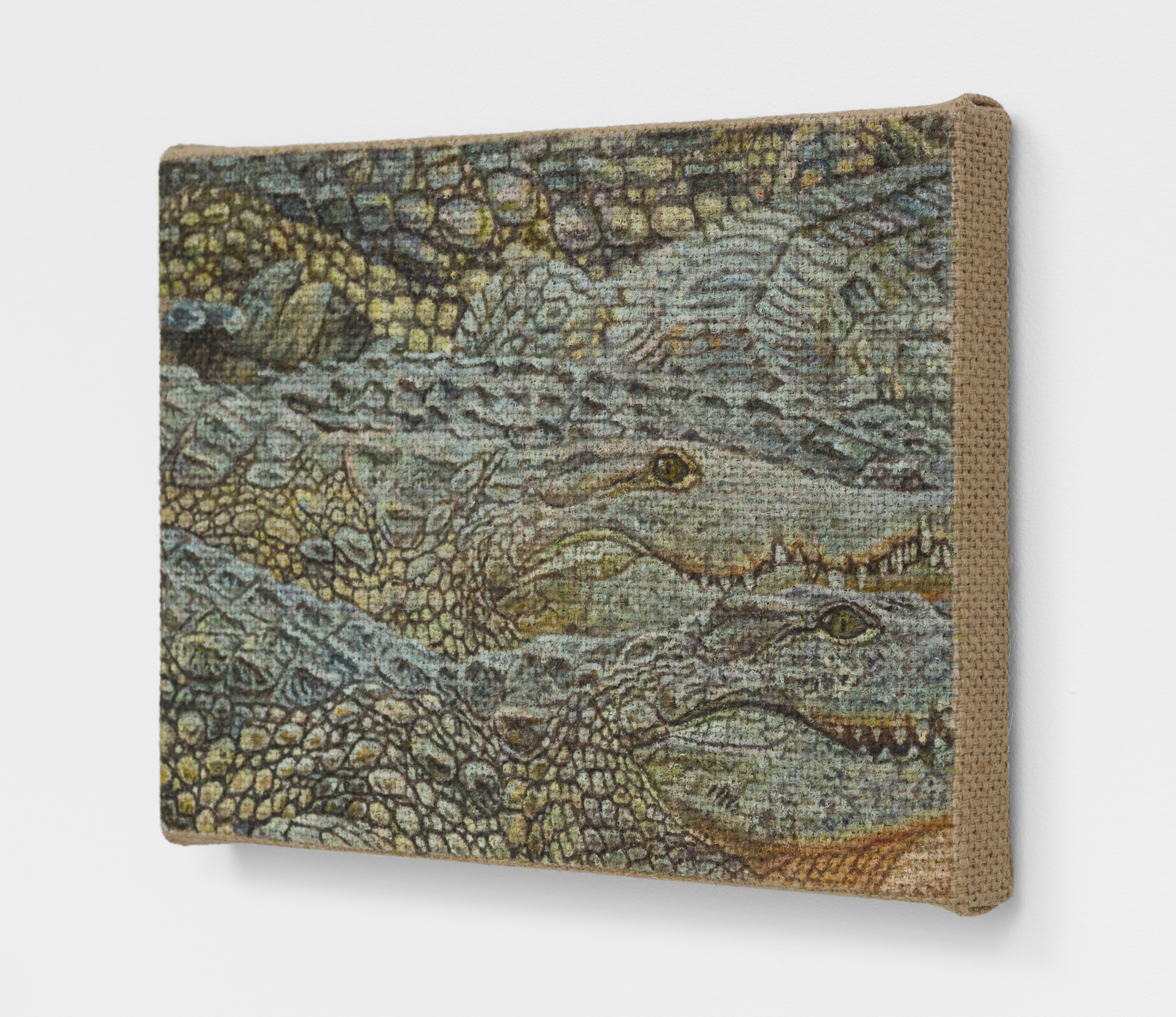They’re glittering, these threads that shimmer more than shine, reflecting off the warm light overhead, which dominates on the left side of the panel, enhancing the gradation effect. Tiny loops of black thread barely stick out of the surface here or there. Let’s call them signs of weaving. From the front it looks like a tight dress that wants to say it holds the twinkling night sky. From the side, it may look like upholstery. Other than that, associatively speaking, there’s not much more mileage to be had from looking at Willem de Rooij’s Black to Black (2011), one of the hand-woven panels in this show that cares little for associative distances the viewer might be able to leap. These are not paintings: they do not refer to painting, but they are hanging objects that have a surface complexity and density similar to that of good/classic abstract painting. Silver to Gold (2009), an earlier, machine-woven work, is a gradation across five machine-woven panels, closely lit, like billboards at night, artificially ablaze. The gradient is the monochrome of the digital, in terms of its blankness and absolutism, and de Rooij uses it to establish his material process of mixing the amount of threads on each panel to achieve a step of the color transition. Black to Brown (2011) is the most how-to of the weavings in the way each thread functions in the gradient; on the black side of the panel, the brown threads intervene sparsely and for short distances. It’s tough to write about abstraction like this—technical, monotone, narrative-less—when it isn’t a reference for something else, but that’s what makes this work interesting, especially today when abstraction first and foremost signifies art that looks like Art. Abstraction here is a stable yet undecided sign upon which references can be coded for the sake of differentiation, and it has a value function in an over-informed art world. Coincidentally or not, David Joselit’s 2009 essay "Painting Beside Itself," accompanied the ascendance of contemporary abstraction in the art market while stating the essential value of references and networked meaning.(1) For the sake of amusement and practicality, Joselit’s ideas could be put through a banal compression by means of cultural reference (the vehicle of meaning for the "transitive"). In "Art, the Social Network," friends circulate information between one another and then post things on walls that then generate comments in those circles, which in turn indicate that the experience is happening in the cloud, on the ink of the press release, at the opening, or in the exhibition’s review, and not exactly before the viewer’s eyes when looking at the art object in the age of digital repetition. For de Rooij, abstraction is what’s left of the experience after the references have been filtered, reduced, amputated. He uses the gallery space as a brutal container, a closed space that does not tolerate the outside world, which is to say that he is decidedly aware of the constructed state of the viewer-art encounter. It’s as if contrary to the original goals of the Internet to preserve communication after the destruction of physical control centers, de Rooij’s intent is to preserve an experience that could survive the destruction of the Internet. To do this in a networked age, it seems, requires an incredible amount of control, or restraint. A counter-example would appear to be "Ryan Trecartin: Any Ever," currently at MoMA PS1, or for the sake of simplicity, Ryan Trecartin in general, or for even greater simplicity, the ADHD aesthetic. This aesthetic, though ostensibly about youth, is one that cannot exercise its technique without parental support, and even a bit of pride (I’m imagining the pride of a parent recognizing that their child is doing something productive with a computer, as opposed to wasting time). It’s intensely bound to a technological innovation, and therefore equally involved in the pseudo-eventness of an older technology being threatened or replaced (the continuity in a crisis of meaning). What makes for catchy phrasing—new generations with their new aptitudes for turning the Internet into art—is something that was built into the new media at the time of McLuhan’s Understanding Media (1964), with greater interaction and participation leading to the traumatic and hip condition of too-much-access.(2) With the aid of technology (fundamentally about control), and armed with the traditions of the readymade and appropriation (restraint of expression), the artist can easily become not much more than a devourer of signs, and art a dreadful game of voracious over-signification. It is also the perfect typification of any of the recent Internet generations, the oft-evoked normative population that is so glued to their screens that when you pull them away you can see all the world’s data still flickering in their eyes. In an odd way, de Rooij stabilizes and squashes the notion of the artist as cultural sensor, with ears always to the ground and eyes wide open. I say odd because he obviously still works with and from points of reference, but one(s) isolated and cut off (untethered from the network) within the white cube, stuck to the muteness or eloquence of the material it contains. In a way it might seem conservative— another gloss on the legacy of minimalism—but in another way it is informatively radical, like an unexpected slap in the face.
1) Joselit, David. "Painting Beside Itself." October 130, Fall 2009, pp125–134. 2) McLuhan, Marshall. Understanding Media: the Extensions of Man. Critical Edition. Cambridge, Mass. : MIT Press, 1994. pp268-269.
